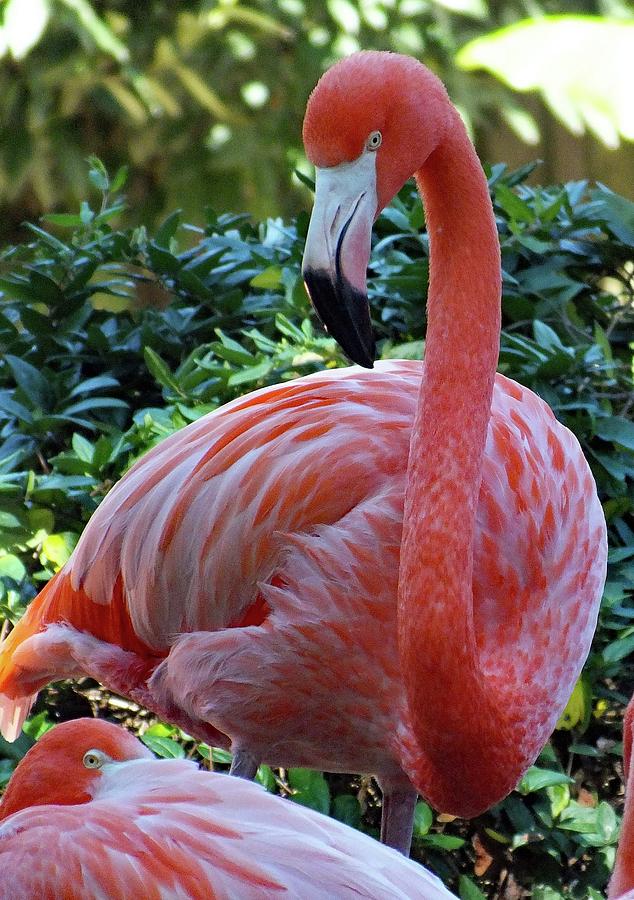

The pictures on this page courtesy of Carol Reese, Ornamental Horticulture Specialist at the University of Tennessee Extension Service.
#Pink flamingo free
He was an ordained Lutheran minister but devoted his free time to the study of the botany. The German naturalist Johann Christian Daniel von Schreber (1739-1810) named the genus for Gotthilf Heinrich (Henry) Ernst Muhlenberg (1753-1815) who was American born but returned to his ancestral Germany for schooling and later returned to America. We thank the Grassman John Greenlee for turning us on to this wonderful grass and Hoffman Nursery in North Carolina for supplying us with our stock. The plant and flowers are much taller and upright like Muhlenbergia lindheimeri but more plumy and pink like Muhlenbergia capillaris. It is reasonable to assume that it is a hybrid between Muhlenbergia capillaris and Muhlenbergia lindheimeri. This plant is a naturally occurring hybrid that was discovered at Peckerwood Garden near Hempstead Texas.

Great for use in mass plantings or in tight locations were its narrow and upright habit makes it the perfect fit. It is both drought tolerant and resistant to deer predation. This is a tough heat-loving grass that has performed well in the dry southwest US and in Texas. Hardy to at least -10 °and useful in USDA Zones 6-10 - some report good in zone 5 (-20 ☏) as well.
#Pink flamingo full
Plant in full sun and irrigate occasionally to infrequently. In late summer into mid fall appear airy pink flower spikes, arching above the foliage by about one and a half feet. Muhlenbergia 'Pink Flamingo' (Pink Flamingo Muhly) - An upright warm-season grass that has foliage to 3 to 4 feet tall by 2 to 3 feet wide with narrow gray-green leaves. Muhlenbergia 'Pink Flamingo' - Pink Flamingo Muhly Investigation is ongoing.Muhlenbergia 'Pink Flamingo' at San Marcos Growers It is currently unknown why SCP-1507 has yet to deanimate, or if it will deanimate in accordance to SCP-243's behavior in the future. SCP-1507 was then upgraded to Euclid status.Īddendum 2 It is currently hypothesized that SCP-243, or a similar anomaly, may be a possible origin for SCP-1507. Realizing that other instances of SCP-1507 have been found to exist outside of Foundation containment, as well as being able to call to more, the wilderness observation cell was upgraded with soundproofing equipment. They proceeded to attack site personnel, with previously unseen levels of aggressive actions and behavior.ĭuring the breach they were hostile towards staff members, wounding 11 and causing 4 fatalities before being re-contained. Approximately 45 hours after the new calls were first observed, 11 new instances of SCP-1507 (hereafter referred to as SCP-1507 16-26) arrived at the site and breached the containment of all SCP-1507 instances. In addition, these vocalizations were unique when compared to any previously cataloged calls. Containment procedures have been slated for revision, and in the meantime all staff members must exercise caution when going into SCP-1507's enclosure.ĭescription: On SCP-1507 began to vocalize more frequently. After the incident, all instances of SCP-1507 have become highly aggressive towards staff members. Taking this as an aggressive action, Boyd knocked SCP-1507-8 to the floor, cracking the plastic shell of the creature. During this time, SCP-1507-8 playfully attempted to take food from him. Amended, see Incident 1507-A and -Bĭescription: On, Researcher Boyd was playing with SCP-1507-8 during his break. Since its containment, no major incidents have occurred, and as such it has been classified as Safe. All members of SCP-1507 were contained at the scene, without incident. When the house the call originated from was investigated, Foundation operatives found a man dead from puncture wounds, with 15 instances of SCP-1507 living in the house. They first came to the Foundation's attention when the Foundation followed up on a 911 call in which the caller claimed to have been attacked by several lawn flamingos. SCP-1507 was discovered on, in Jacksonville, Florida. SCP-1507 will frequently appear docile until it attacks, leading to several cases of severe injury among research staff. Instances of SCP-1507 are universally hostile towards humans, and have been known to attack personnel who enter the enclosure by dropping down on them, using their metal stands to create scratch wounds and puncture wounds in their victim's face and eyes. Testing has shown they do not possess any complex intelligence. Instances of SCP-1507 are vulnerable to the same forces as ordinary plastic would be vulnerable to, such as heat and pressure. Instances of SCP-1507 have the same behavior patterns as a normal specimen of Phoenicopterus ruber, but do not require feeding.

SCP-1507 is a set of 15 26 pink plastic lawn flamingos made in Coral Springs, FL.


 0 kommentar(er)
0 kommentar(er)
